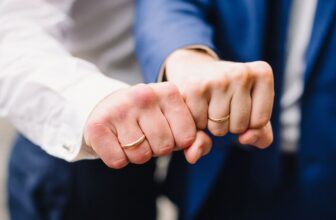
Table of Contents
While ring shanks aren’t the first thing that comes to mind when thinking of buying a ring, they are an important element of a ring and one that needs to be considered. The type of ring shank you choose can affect not just the beauty but also the comfort of the fit. What’s more, each ring shank has its own unique look and offer a different feel the overall ring design. Let’s take a look at the 10 most popular types of ring shanks, and their pros and cons.
Types of Ring Shanks
Knowing about ring shanks is crucial as it determines the comfort, durability, and overall aesthetics of the ring. This knowledge helps you select the right design for daily wear, ensures longevity, and guides any potential customization or repairs. There are many types of shanks for rings, but most can be categorized into the following styles:
1. Straight Shank
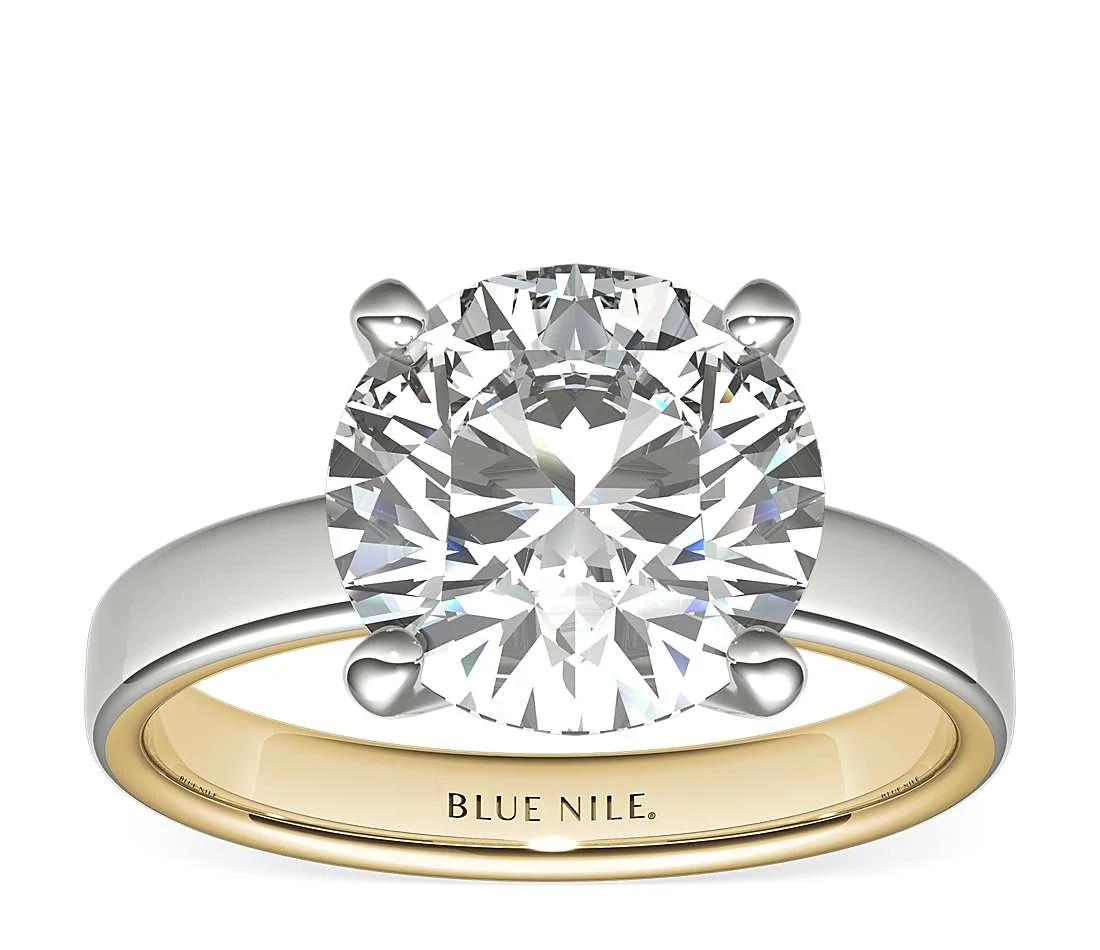
A ring with a straight shank features a band that has the same width at all points. This type of shank is very basic, with no tapering or splitting, and simply serves to hold the center stone or be worn as a wedding band. This shank style typically features flat edges, but if the edges are curved, it’s known as a comfort fit band.
2. Split Shank
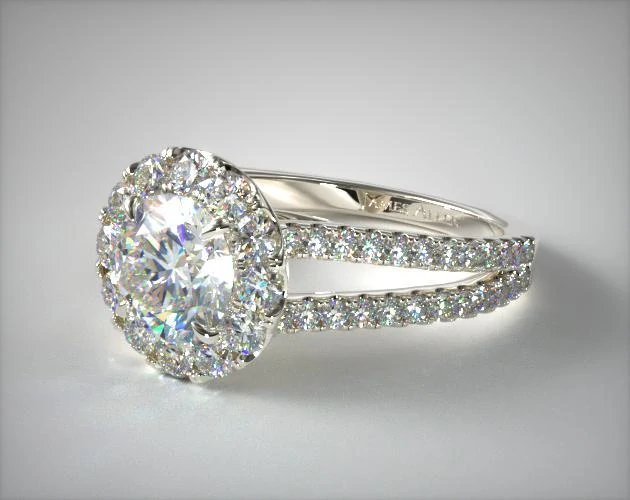
One of the more popular types of shanks, split shanks feature a single metal shank that splits into two as it nears the center stone. At first glance, a split shank can appear like two bands but a closer look will show that the two are merely the result of splitting the single band. These shanks can come in a wide variety, from a very slight split like this classic 14k white gold solitaire ring, or very elaborate and unique like this alternating shapes open split shank ring.
3. Open Split Shank
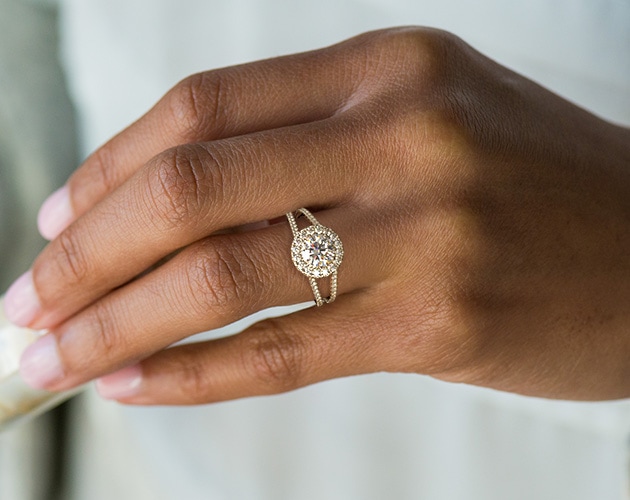
An open split shank is very similar to regular split shank rings, except that the gap is a lot wider and dramatic. The split also goes further around the circumference of the band, appearing like two separate bands. Open split shank rings are perfect for a complex looking design and especially ideal if you’re going for an all in one ring.
4. Cross Over Shank
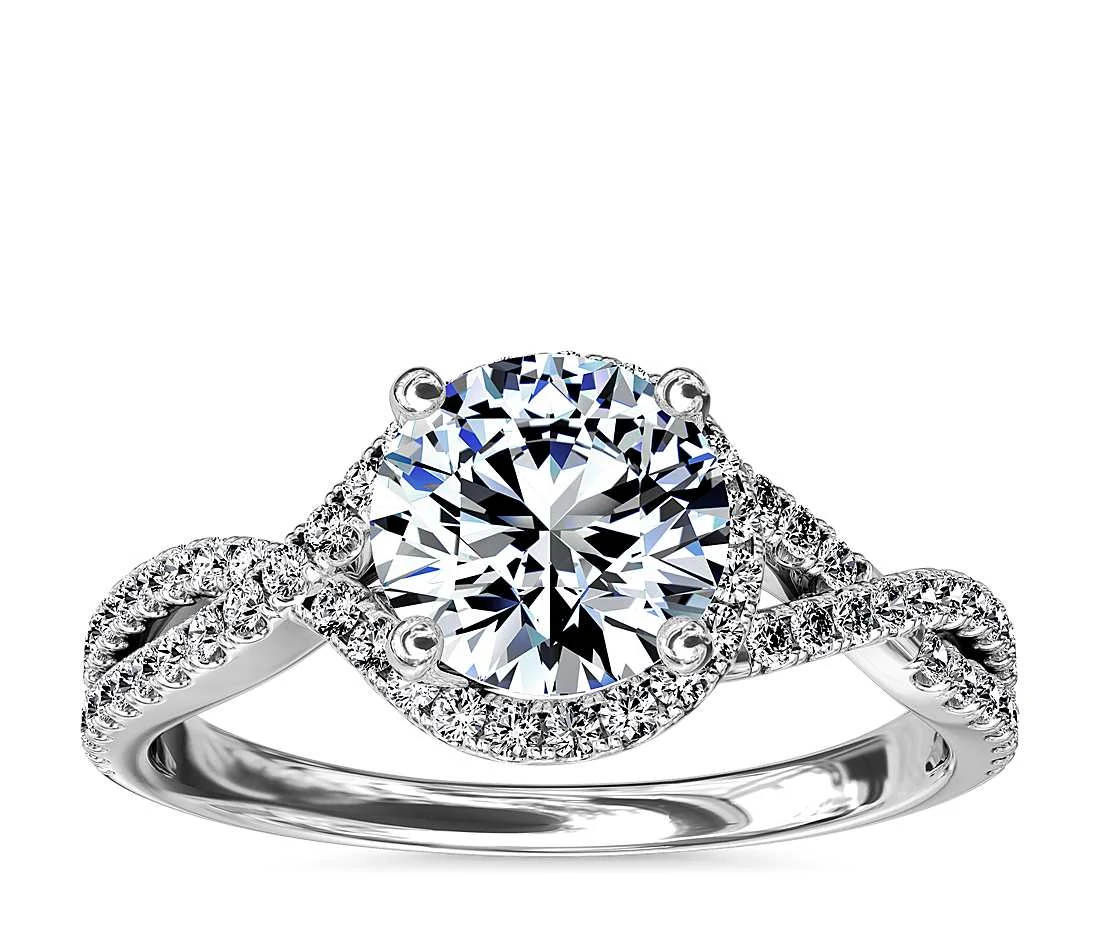
The crossover shank typically refers to a split shank where the bands crossover or twist around each other to create a unique design. This complex design instantly elevates a simple band and adds texture and depth to the look. Again, this is a versatile design choice that can come in a wide range of styles.
5. Bypass Shank
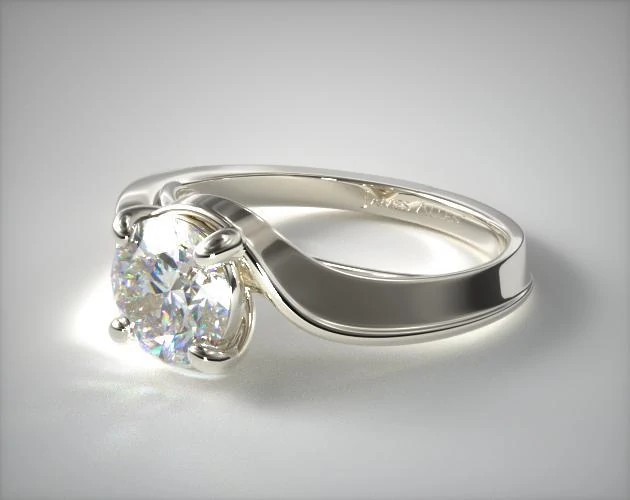
A bypass ring features a metal band that separates as it reaches the center stone, becoming two sections. Instead of a single continuous band, the band is parted and depending on the design, can overlap or be separated. This is a versatile style that can be modified to suit a wide range of designs and typically gives an elegant, flowing feel to the ring.
6. Tapered Shank
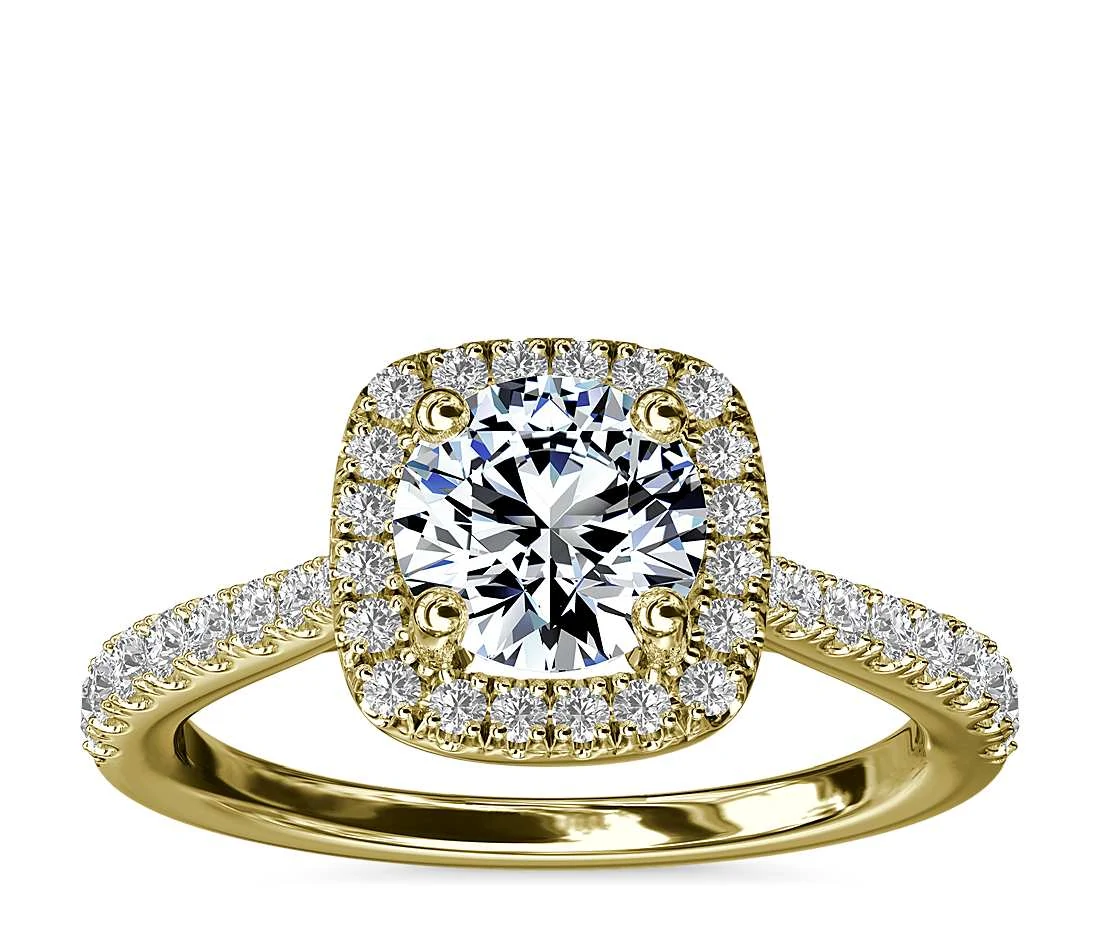
A tapered shank refers to when the ring band becomes thinner as it reaches the center stone, resulting in a band with different widths at different points. The benefits of a tapered band is that it tends to make the center stone appear larger than it is. It also tends to elongate the finger, making them appear longer and slimmer.
7. Knife Edge Shank
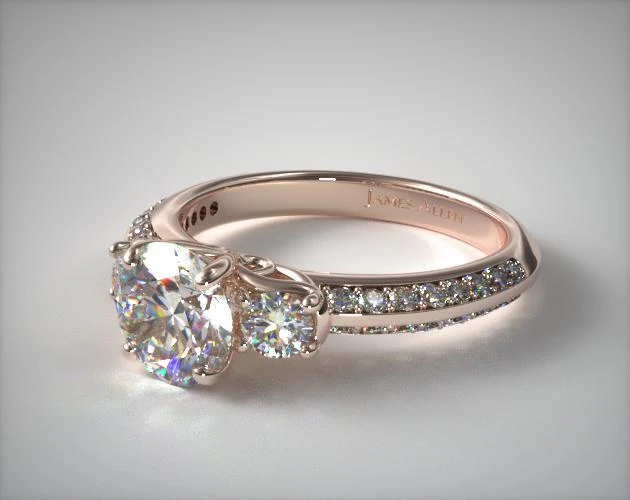
Knife edge shanks feature a sharp edge that go around the outer edge of the band, which is what gives the style its name. The knife edge shank creates a unique look, with the edge effectively splitting the band into two sloping edges, meeting at the knifepoint. While this makes for an intriguing look, a knife edge can feel uncomfortable especially if you’re squeezing your fingeres together. Even so, most people don’t have an issue with the knife edge shank.
8. Cathedral Shank
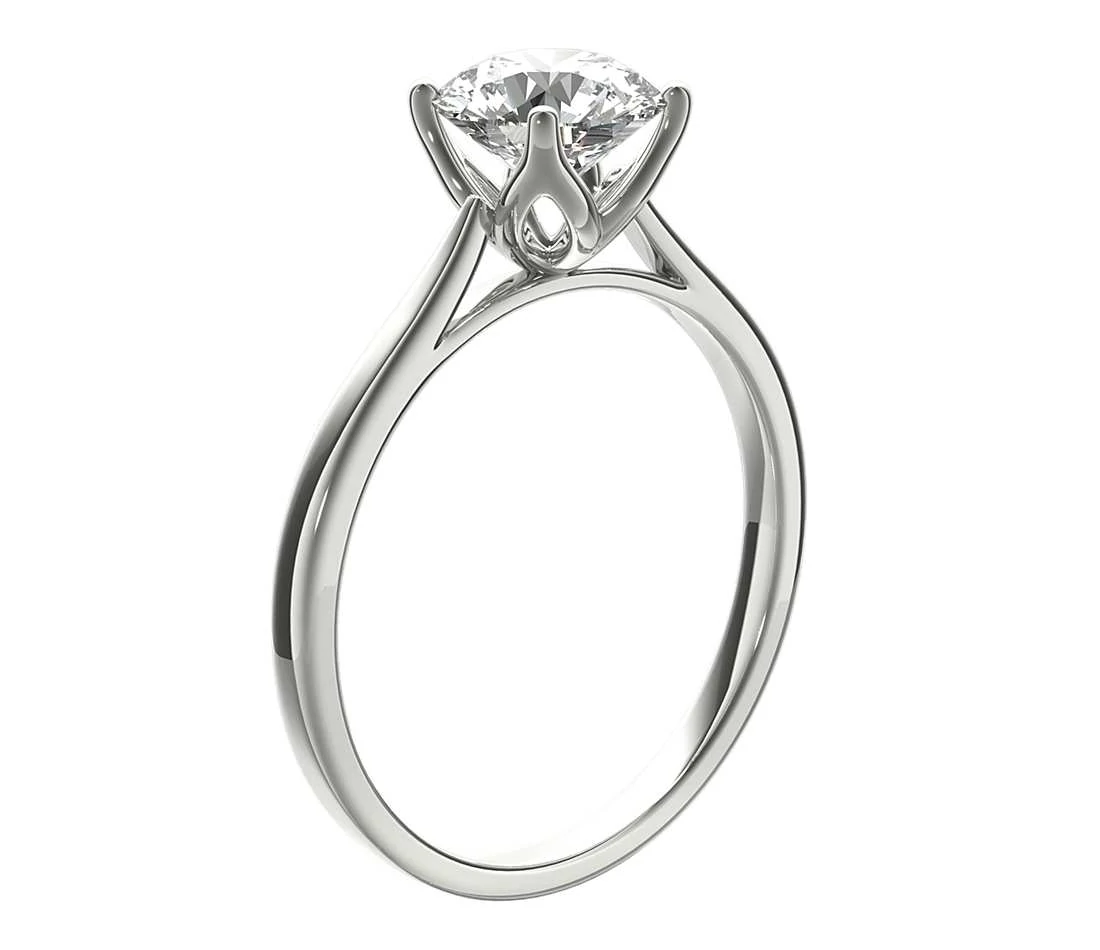
Cathedral shank refers to a typical engagement band with the main difference being that the shank ends in two arches designed to hold the setting of the center stone. In these settings, the stone is held up high by the arches, imitating the beauty and elegance of a cathedral and drawing all eyes onto the stone as the focal point of the ring. The end result is a beautiful ring style that can be either minimalistic or dramatic but always stylish and elegant.
9. Flat/Euro Shank
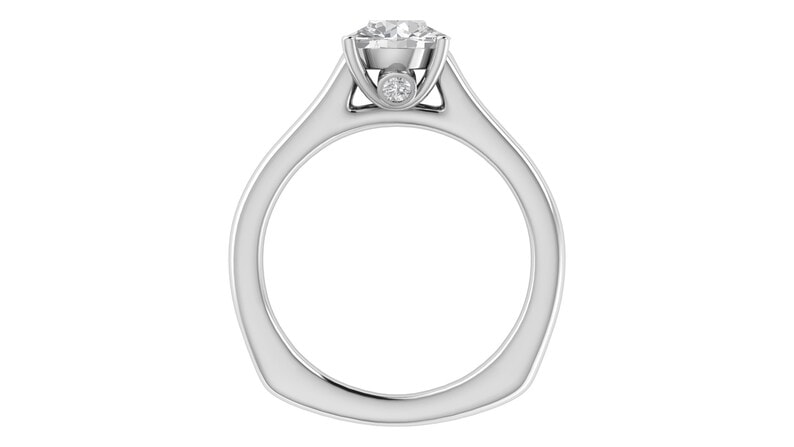
Flat shanks, sometimes called Euro shanks, look like regular rings except that they have a square bottom. These look modern and stylish and give a new twist to the age-old traditional ring style, although once you wear it, you won’t really notice any visible difference. The main benefit of this is that, as the edges are thicker and angular, it keeps the ring from spinning. However, it can feel a little thicker and noticeable for people who aren’t used to the feel of a ring.
10. Custom Shank Styles
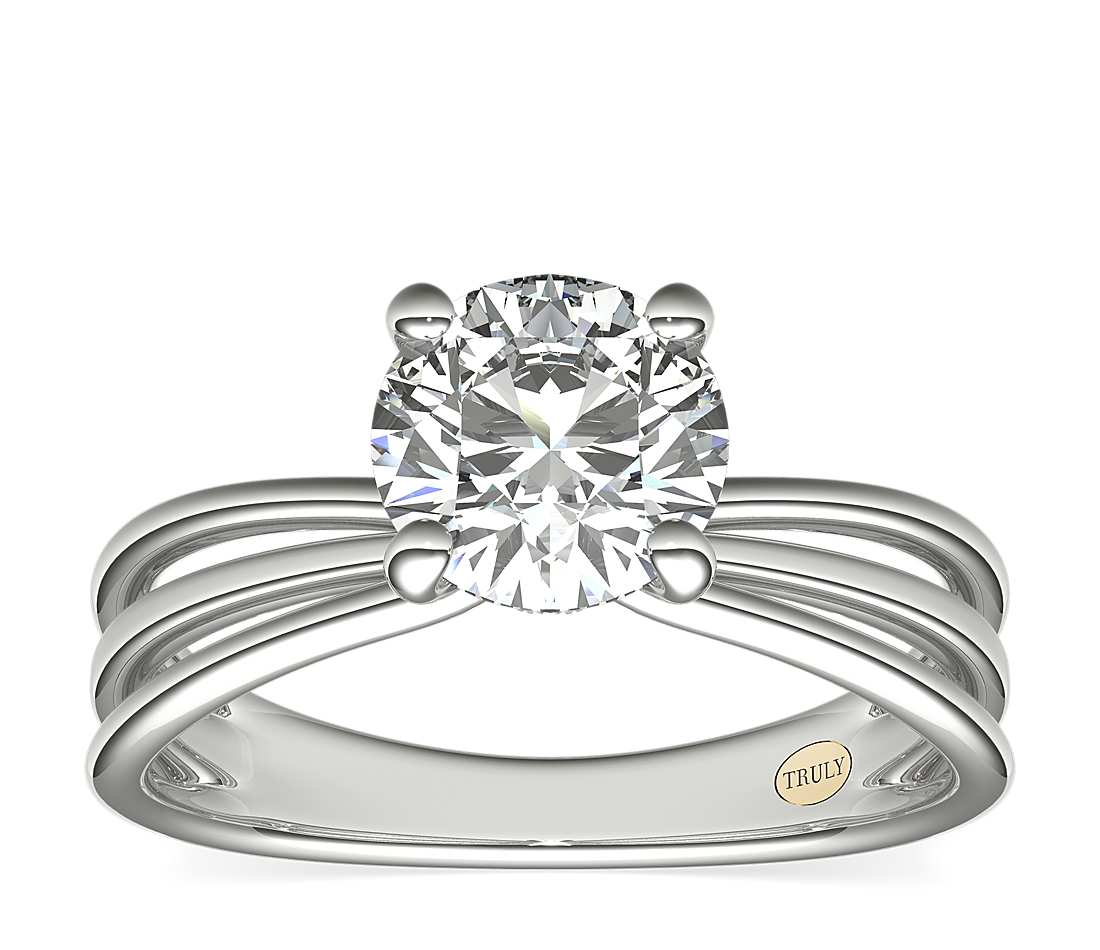
As I mentioned above, you can get as creative as you want with your engagement ring shank. The ring featured above is designed with the shank split into three instead of two sections, essentially creating a triple band look. This is just an example of what a good designer can add to a traditional looking ring, elevating its look and making it truly different.
How to Choose the Right Shank for You
When it comes to choosing the right shank, personal style and practical considerations go hand in hand. Are you seeking a classic, timeless look? A straight shank might be your best bet. For those looking to add a touch of elegance or drama, cathedral or split shanks can elevate the overall design.
Beyond aesthetics, think about your daily activities. If you’re hands-on or work extensively with your hands, opting for a more robust shank like the Euro shank might prevent excessive rotation.
On the flip side, those with active lifestyles might gravitate towards hollow shanks for a lighter feel. Ultimately, the right shank marries form with function, enhancing the beauty of the ring while ensuring it complements your lifestyle.
Wrapping Up
When choosing your ring design, consider the comfort of the ring, your lifestyle, your budget, shape of your hands and preferences to help you decide. The ring should not only look good but also feel good and this is largely dictated by the type of shank you choose. It helps you appreciate the aesthetics of the ring design, and find the right balance between style and functionality.





